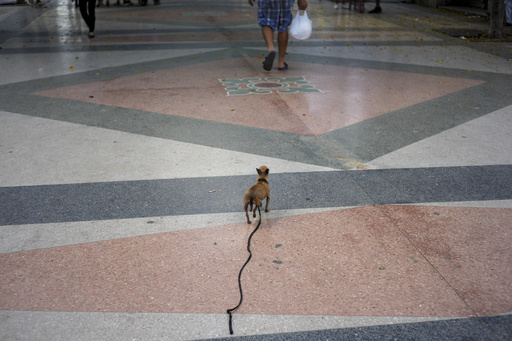
In Havana, three fortunate dogs named Balto, Pepa, and Mami found new hope after being abandoned by their owners who either left Cuba or could no longer care for them. These animals were rescued by dedicated activists, who provided them with nourishment, sterilization procedures, and loving homes. Unfortunately, many other pets in similar situations were not as lucky and are now roaming aimlessly on the streets.
While there are no concrete statistics detailing the number of pets left behind due to migration trends, animal welfare advocates have observed a soaring increase in the number of abandoned animals in the last two years. This rise correlates with a significant wave of Cubans leaving the island, seeking better opportunities elsewhere. Elizabeth Meade, the founder of Adoptions for Love, an animal shelter in Havana, discussed the tough decisions many people face: “We’d receive calls from individuals who need help with their pets because they are suddenly migrating and unsure how to manage their animals.”
Despite the shelter’s efforts to find homes for approximately 300 pets last year, many of these animals ended up back in shelters or went missing after their new owners also relocated. According to Meade, “it’s not always a happy ending” for these abandoned pets.
From October 2021 to September 2024, U.S. authorities reported over 600,000 encounters with Cubans fleeing the island, a notable statistic for a population of around 10 million. In addition, many others have migrated to Spain and other countries in Latin America. However, for many Cuban families, taking their pets along is simply unfeasible.
Transporting a pet from Havana to Miami, for example, can be an expensive process. The costs can reach as high as $1,200 for fees like medical evaluations and flight expenses. Furthermore, since September, pet owners are obligated to pay an additional $1,300 due to new quarantine rules.
Living conditions in Cuba have also become increasingly challenging, with the country’s gross domestic product declining by 2% in 2023, leading to widespread inflation, and serious food and fuel shortages. For many Cubans, affording to care for a pet has become a significant burden. The average monthly wage in the state sector, the primary employer, is around $21, while a 20-kilogram bag of imported dog food can cost up to $70, and veterinary services can set owners back about $10.
Despite the growing number of abandoned animals, a wave of animal rights activism has begun to take shape, especially after the Internet became more widely available in 2018. This movement has gained momentum through social media, allowing rapid communication and organization of relief efforts. In 2021, advocates celebrated the passage of a long-anticipated animal welfare law intended to address cruelty and enhance awareness about the necessity of animal protection; however, many activists believe additional measures are necessary.
Leandro Valdés, a dog trainer who owns a rescued pet named Koffee—whose adventures on Valdés’ motorcycle have made him a local sensation—reflects on the dire situation: “Abandonment is the worst form of animal abuse.” He further emphasizes the adverse effects of increased migration on animal abandonment and suggests that this problem is tied to the erosion of values precipitated by Cuba’s escalating economic turbulence.
